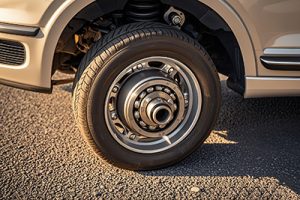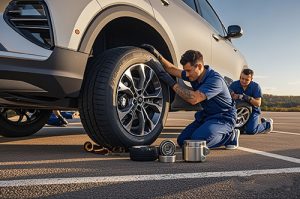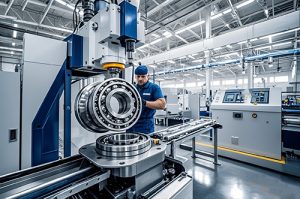“Automotive Bearings: The Unremarkable yet Crucial ‘Rotating Heart’—How Much Do You Know?”
Automotive bearings, seemingly unremarkable components in a car, are actually the “rotating heart” of a car’s operation and play a key role in vehicle performance.Their primary function is to reduce friction.
Just like in the wheel area, bearings make it easier for the wheels to rotate, reducing driving resistance, not only making the vehicle run more smoothly but also lowering energy consumption. At the same time, bearings also take on the responsibility of supporting the weight of the vehicle body. For example, hub bearings, when the vehicle is moving, have to bear the weight of the entire vehicle body and the impact forces from various complex road conditions, ensuring the stable operation of the wheels.There are various types of automotive bearings. Deep groove ball bearings are widely used. They can withstand radial loads and a certain degree of bidirectional axial loads. They are found in many parts of a car’s transmission system, are easy to install, and have high space utilization. Tapered roller bearings can bear both radial loads and unidirectional axial loads, have strong load – bearing capacity, and are often used in the front wheels of cars and other parts. There are also angular contact ball bearings, which can bear both radial loads and unidirectional axial loads, and play a role in some components with high requirements for precision and stability.Using inferior bearings can lead to endless troubles. The most obvious one is abnormal noise. During driving, you may hear a continuous buzzing sound, which will get worse when turning, seriously affecting the driving experience. Steering jamming may also be caused by inferior bearings, which greatly affects vehicle handling and poses a threat to driving safety.The automotive bearings we sell are made of high – quality steel in terms of material. This kind of steel has high strength and good wear resistance, which can effectively extend the service life of the bearings. In terms of craftsmanship, advanced processing technology is adopted to ensure the high precision of the bearings, reduce the noise during operation, and improve stability, making your driving safer and more comfortable.
• “How to Read Tire Sizes? What Exactly Does 215/55 R17 Mean?”
When you get a tire, the series of numbers and letters on it may be confusing. Take 215/55 R17 as an example. 215 represents the width of the tire in millimeters, referring to the width of the side of the tire that comes into contact with the ground. A wider tire usually provides better grip but may increase fuel consumption. 55 is the aspect ratio, which is the percentage of the tire’s section height to its width. A smaller value means the tire is flatter, with relatively better handling but possibly reduced comfort. R stands for radial tire, which is the most common tire structure nowadays. The cords are arranged radially, with high strength and low rolling resistance. 17 is the diameter of the wheel hub in inches, meaning this tire is suitable for a 17 – inch wheel hub.
Different vehicle models and driving habits are suitable for different tires.
For cars used for urban commuting, comfort and quietness are generally more important. You can choose tires with fine patterns and low noise. For example, our [brand name] tires have a pattern design that can effectively reduce the noise generated during driving, allowing you to enjoy a quiet driving environment even in urban traffic jams. If you often drive off – road, you need tires with strong grip and wear resistance. Our [off – road tire series name] tires have a unique block pattern design, which can firmly grip the ground in complex road conditions such as mud and sand, providing reliable driving force. Moreover, they use a special rubber formula, with excellent wear resistance, which can adapt to high – intensity off – road needs.





